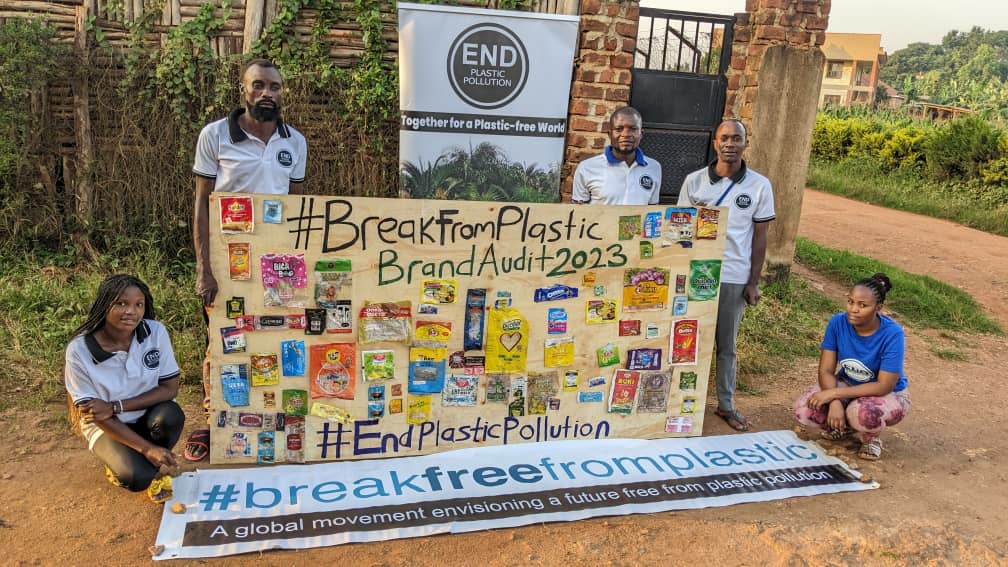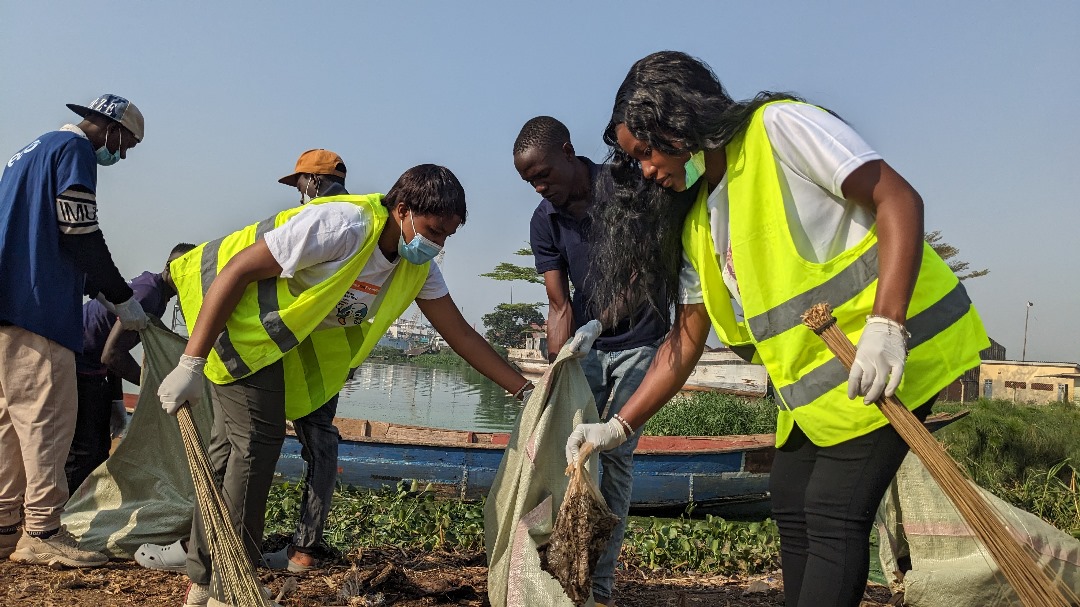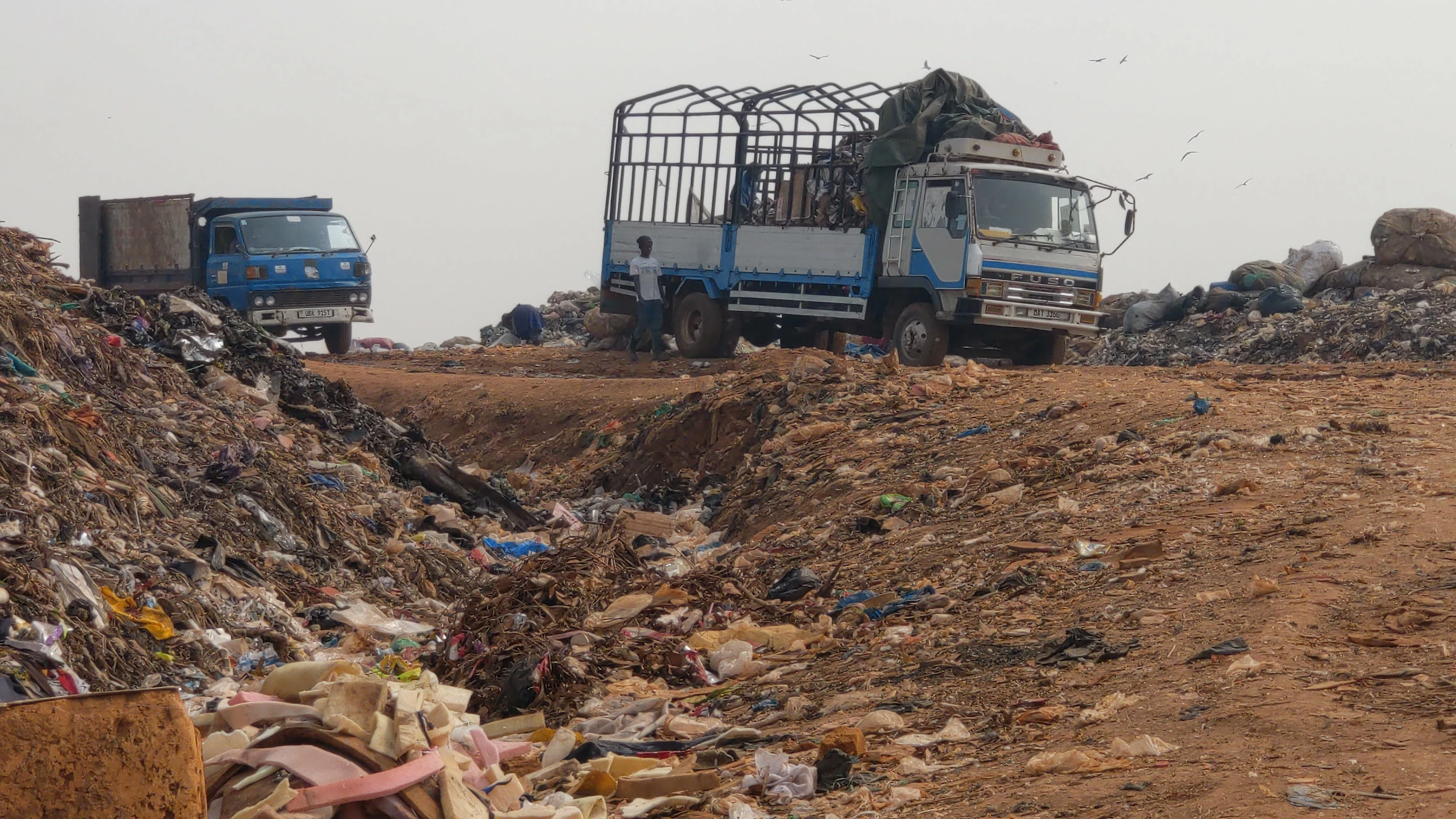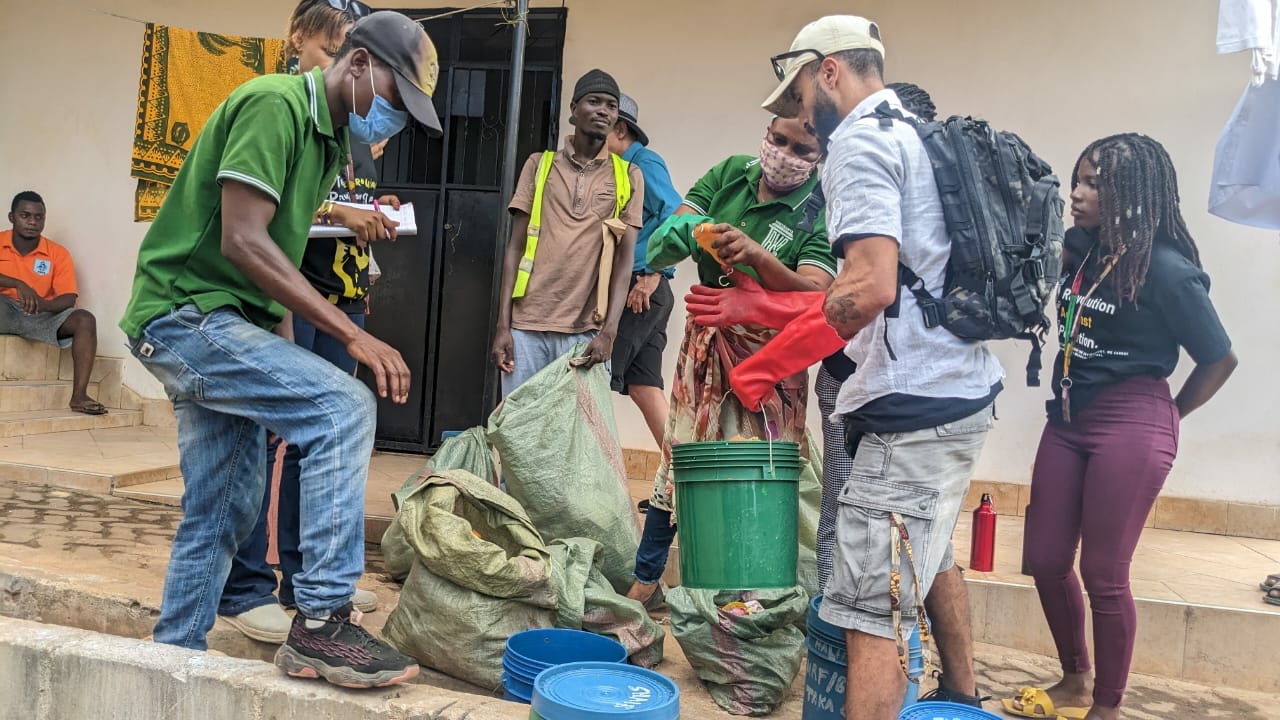A SUSTAINABLE EXISTENCE BEFORE PLASTICS
Introduction
Long before the invasion of plastics and synthetic materials, people lived in harmony with nature with a deep connection. Their lifestyle was deeply rooted in sustainability, waste-free, resourcefulness, and respect for the environment. Unlike today’s world, where plastic pollution chokes rivers, litters landscapes, and harms wildlife, people long ago relied on organic, biodegradable materials that returned to the earth without harm.
This article explores how people ago especially from Buganda thrived in a plastic-free society, using natural resources wisely, maintaining ecological balance, and living in a way that future generations could also enjoy.
1.Homes Built from Nature
The houses for the people ago was fully sourced from local natural materials based on the location of the society.
Walls: Made from wattle and daub(woven reeds or bamboo plastered with a mixture of mud, clay, and sometimes cow dung for strength).
Roofs: The roofs were thatched with grass(Essubi/Spear grass) or palm leaves, which provided insulation – Keeping homes cool during day and warm at night.
Floors: Made of compacted earth, often mixed with anthill clay for durability. Some royal houses had polished clay floors smoothed with cow fat for a glossy finish. Others used cow dung on their floors as well.
Pillars and Beams: Wooden poles from trees like musambya tree provided strong and durable structural support during construction of the main houses and on sheds.
Painting: Most people used to get clay, borehole soil, cow dung, anthill soil to draw different designs of their lifestyle or for painting on their houses.
Sustainability Features
Biodegradable: When a house was abandoned or rebuilt, the materials decomposed naturally, leaving no toxic waste.
Cooling Design: The thick thatched roofs and mud walls regulated temperature without needing electricity.
Community Buildings: Construction was a communal effort – relatives and neighbors helped gather materials and build, strengthening social bonds.
Royal Architecture: The Barkcloth Houses
Like in Buganda, the Kabaka’s(King’s) palace and important buildings were sometimes adorned with barkcloth(Olubugo), a fabric made from the mutuba tree. This showed prestige while still being eco-friendly. The reeds were also used to give a better finishing and a more nice look. At times most palaces were built on reeds and spear grass then adorned with barkcloth.
2.Food Storage and Preservation Without Plastics and No Waste
Storage Methods
Clay Pots: Used for storing water and grains. The porous nature of clay kept liquids cool at a good temperature good for the body through evaporation.
Calabashes(Endeku and Ebita): Used for storing local wines, drinking, drawing water from clay pots. This ensured no micro plastic intake for the people hence a good health.
Wooden Cups(Ebyanzi): Used to store milk and could be used as cups for servings to guests, yet some were reserved for the family.
Woven Baskets(Ebibbo): Made from banana leaves and other natural plant(Enjulu) and others from palm leaves, pupairus bark, these held dry goods like beans, millet, coffee beans and could also be used to store food for the next day.
Granaries(Ebyaagi): Elevated storage huts made from reeds and thatch protected harvested crops from pests and moisture. Dry food like beans, maize, millet could be kept for a long period of time and could be used in case of hunger. At times in their kitchens(ekibanyi), they could also leave some maize or even millet or sorgum to hang in the smoke for a good time.
Food Preservation Techniques
Sun-Drying: Vegetables, fish(Mukene) and meat were dried under the sun for long-term storage.
Smoking: Meat and fish were smoked over fire to preserve them without refrigeration.
Fermentation: Foods like Obushera(Millet drink) and tonto(banana beer) were fermented naturally in gourds or clay pots.
Banana Leaves as Wrappers: Steamed dishes like Lumonde(Sweet potatoes), meat or groundnut sauce wrapped in banana leaves(Oluwombo) cooked without plastic or foil.
Zero-Waste Eating
Leftovers were fet to animals or composted.
Bones and shells were buried in broths.
No plastic Packaging: Markets used banana leaves or woven baskets to carry goods.
3.Clothing and Fabrics: 100% Natural & Biodegradable.
Barkcloth (Olubugo): The Ancient Eco-Fabric
Made from the inner bark of the Mutuba tree(Ficus natalensis)
The bark was harvested without killing the tree, making it a renewable reource.
Softened by beating using a mallet and soaking, it became a durable, breathable fabric used for clothing, bedding and royal regalia in most cultures across Africa.
Other Traditional Attire
Animal Skins: Reserved for chiefs and royalty(leopard skins symbolized power).
Woven Fibers: Mats, bags and ropes were all made from palm leaves, banana leaves, seasle and reeds.
Dyeing & Decoration
Natural dyes from clay, plant roots and charcoal were used for pertterns.
No synthetic chemicals meant no water pollution for textile waste.
4.Farming and Land Stewardship: Sustainable Agriculture
Crop Diversity & Soli Health
Banana plantations: These were grown alongside beans, coffee, yams ensuring a good mineral balance between the crops and no synthetic manure was used.
Intercropping: Planting different crops together like beans and maize improved soil fertility and reduced pests.
Crop Rotation: Fields were rested or rotated to prevent soil depletion and also helped to improve fertility for rested grounds.
Natural Fertilizers & Pest Control
Manure: cow dung and chicken droppings enriched the soil with great mineral.
Mulching: Banana leaves and dry grass were used to retain moisture.
Ash & Herbs: Burnt plants remains and natural repellents kept pests away from the gardens of farmers.
Liquid Manure: This could be collected in pits from the cows’ urine if well designed, mixed with water and other herbs like mululuza and taken to the garden.
Sacred Groves & Forest Conservation
Sacred Forests(Ekibira): Protected areas where cutting trees was forbidden, preserving biodiversity.
Trees with Cultural Value: The mutuba (barkcloth tree), fig tree, Emisambya(Strong and medicinal tree) plus many more were reserved which helped in air conditioning, treatment, left for poles and other values as trees are also a strong wind breaker.
5.Zero-Waste Lifestyle
Reuse & Recycling
Broken Tools: Repaired or repurposed (e.g., a cracked pot became a plant holder, could also be used by pregnant women for medicine intake).
Old Clothes: Turned into rags, stuffing, or recycled into new fabrics.
Banana Fibers: Used for ropes for small animals like goats, mats(obulago), and even as fire starters.
Papyrus Reeds: Could be used to make mats, ceiling, baskets and others.
Composting & Animal Feed
Food scraps fed pigs, chickens, or goats.
Plant waste was composted to enrich gardens.
No Plastic Pollution
Water Carried in Gourds: No plastic bottles.
Shopping with Baskets: No plastic bags.
Natural Cleaning: Sand, ash, and fibrous plants were used instead of synthetic scrubbers.
6.Transportation and Trade Without Pollution
Travel Methods
Walking: The primary mode of transport for short distances.
Wooden Canoes: Used for fishing and crossing lakes like Victoria and Kyoga.
Ox-Drawn Carts: For transporting heavy goods like harvests or construction materials.
Manual Labor: Africans used to share the load based on what a person could carry, then transport them by foot to other locations.
Market Days (Obutale) & Trade
Goods were carried in baskets, barkcloth bundles, or wooden crates.
No Plastic Packaging: Items like salt, grains, and spices were wrapped in leaves or stored in pots.
Barter System: Exchange of goods (e.g., bananas for pottery) reduced reliance on money.
Simple Sacks: Snacks like pancakes could also be sold from banana leaves and others they could like popped corns. The could make a conical shape from a leave(olusoggo) and then put the content there before sharing/selling.
7.Cultural Practices That Protected Nature
Sacred Natural Sites
Trees & Springs: Certain trees (like the musambya, mukokowe) and water sources were protected by taboos, which helped in retaining the natural resources.
Royal Decrees: The Kabaka enforced laws against overhunting and deforestation especially in some seasons.
Seasonal Restrictions
Hunting Bans: Allowed wildlife to reproduce.
Fishing Rules: Certain lakes had closed seasons to protect fish stocks.
Community Responsibility
Bulungi Bwansi (Communal Work): Villagers came together to clean wells, dig trenches, and plant trees.
Reclaiming Sustainability: Blending Buganda’s Wisdom with Modern Solutions
Introduction: The Crisis of Modern Living
Today, the world faces an environmental catastrophe:
Plastic pollution chokes oceans and landfills.
Fast fashion fills dumps with synthetic fibers that never decompose.
Deforestation & over-farming destroy ecosystems.
Overpopulation & urbanization strain natural resources.
Artificial Fertilizations has destroyed the eco-system, no more ants, poor soil structure and others.
Yet, Buganda’s traditional practices prove that humans once lived sustainably—without waste, pollution, or ecological destruction.
The solution? We must merge ancient wisdom with modern innovation to create a zero-waste, regenerative future.
1. Sustainable Housing: Modern Homes with Ancient Techniques
Problem:
Modern construction relies on cement (high CO2 emissions) and plastic-based insulation.
Urban slums lack proper cooling, leading to high electricity use for air conditioning.
Solution: Eco-Architecture Inspired by Buganda
Mud & Bamboo Construction – Reinforced with modern stabilizers for durability.
Thatched Roofs with Solar Panels – Combining natural cooling with renewable energy.
Barkcloth Insulation – A biodegradable alternative to synthetic foam.
Vertical Gardens in Cities – Using banana plants and native vegetation to cool buildings.
Example: "Earth-ship" homes (self-sufficient houses made from recycled materials) could integrate Buganda’s mud walls and thatch roofing for a carbon-neutral future.
2. Plastic-Free Living: Reviving Traditional Storage & Packaging
Problem:
Single-use plastics dominate food storage (bags, bottles, wrappers, polythenes).
Microplastics now pollute water, soil, and even human blood.
Solution: Back to Natural Alternatives
Clay Pot Fridges (Zeer Pots) – Ancient cooling tech that works without electricity.
Banana Leaf Packaging – Replacing plastic wraps for snacks and groceries.
Beeswax Food Wraps – A modern twist on barkcloth for preserving leftovers.
Basket-Based Shopping – Supermarkets could offer woven baskets instead of plastic bags.
Example: India’s "Leaf Republic" makes disposable plates from leaves—similar to Buganda’s luwombo banana-leaf wraps.
3. Ethical Fashion: Bringing Back Barkcloth & Natural Fibers
Problem:
Fast fashion is the 2nd largest polluter (after oil).
Polyester clothing sheds microplastics in every wash.
Solution: Slow Fashion with Traditional Techniques
Revive Barkcloth (Olubugo) Production – Modern designers could use it for shoes, bags, and jackets.
Hemp & Organic Cotton – Sustainable alternatives to synthetic fabrics.
Second-Hand & Repair Culture – Instead of throwing clothes away, mend and upcycle them.
Example: Ugandan designers like Jose Hendo already use barkcloth in high fashion, proving tradition can be trendy.
4. Regenerative Farming: Feeding the World Without Destroying It
Problem:
Industrial farming depletes soil with chemicals.
Monoculture crops (like maize fields) kill biodiversity.
Solution: Buganda’s Farming Wisdom + Modern Science
Urban Farming with Permaculture – Growing food on rooftops using intercropping (beans + maize + greens).
Agroforestry – Planting bananas, coffee, and trees together, like in traditional Buganda gardens.
Composting & Biochar – Using food waste to enrich soil instead of synthetic fertilizers.
Example: The "Food Forest" movement mimics Buganda’s diverse farms, creating self-sustaining ecosystems.
5. Waste-Free Cities: Learning from Ancient Buganda’s Zero-Waste Culture
Problem:
Landfills overflow with single-use plastics and electronics.
Recycling fails because most plastics can’t be reused.
Solution: A Circular Economy
Ban Single-Use Plastics – Replace with banana-leaf packaging, bamboo cutlery, clay cups.
Community Composting Hubs – Turn food waste into fertilizer for urban gardens.
Repair Cafés – Fix electronics, clothes, and furniture instead of trashing them.
Example: Rwanda’s plastic ban (since 2008) shows strict policies work—imagine Kampala doing the same but with traditional alternatives.
6. Clean Energy & Transport: Low-Tech, High-Efficiency Solutions
Problem:
Cars & factories burn fossil fuels, worsening climate change.
Electric vehicles (EVs) still rely on mining and rare metals.
Solution: Smart Traditional Alternatives
Bicycle & Canoe Transport – Revive walking paths and water routes for short trips.
Solar + Fireless Cookers – Like Buganda’s slow-cooking in banana leaves, but with retained-heat tech.
Biogas from Waste – Turn food scraps and manure into clean energy.
Carbon-Free Transport Days - Governments should as well restrict movement in motor vehicles on some days like weekends, people could use bikes or walk which is also healthy, to reduce on the amount of carbon in the atmosphere.
Example: Bogota’s Ciclovía (car-free Sundays) proves cities can prioritize pedestrians and cyclists.
7. Cultural Restoration: Laws & Mindsets for a Green Future
Problem:
Consumerism teaches us to buy, use, and discard.
Nature is seen as a resource, not a life-giver.
Solution: Bring Back Eco-Conscious Traditions
Sacred Green Zones – Protect forests and rivers by law, like Buganda’s ekibira.
Eco-Education in Schools – Teach kids barkcloth-making, farming, and zero-waste living.
Tax Plastic & Reward Sustainability – Governments should incentivize natural packaging, solar energy, and composting.
Example: New Zealand’s "Living Earth" policy grants legal rights to rivers—similar to Buganda’s sacred natural sites.
Conclusion: A Blueprint for the Future
We don’t have to choose between modernity and sustainability. By blending ancient wisdom with today’s innovations, we can:
End plastic pollution with natural alternatives.
Restore dead soil through regenerative farming.
Cool cities naturally with green architecture.
Wear clothes that don’t poison the earth.
The future must be traditional—just upgraded.
Call to Action:
Start small: Use a clay water bottle instead of plastic.
Support local artisans: Buy barkcloth bags, bamboo toothbrushes.
Demand policy change: Push for plastic bans, urban gardens, and clean energy.
The People ago thrived without destroying their world—so can we.




